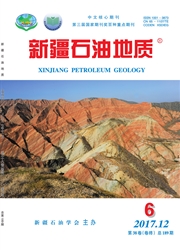

 中文摘要:
中文摘要:
原子磁性的回声(NMR ) 的显微镜的反应特征广泛地被使用描绘岩石的复杂毛孔结构。由于禁止的 NMR 实验费用,数字模拟作为一条其他的途径被采用验证 NMR 回答的一些理论方面。第一,毛孔规模 NMR 模拟的基本原则基于随机散步的方法(RWM ) 被介绍。模仿 RWM 的结果是有一个理想的球形的毛孔模型的分析结果的 benchmarked。然后,二个数字参数的效果,也就是,散开半径和散步数,在模拟精确性上被学习。模拟方法然后与充满不同液体学习显微镜的 NMR 反应特征的不同毛孔尺寸和毛孔形状被用于各种各样的毛孔模型。数字实验为理解并且解释 NMR 大小是有用的,模拟代码提供一个数字工具执行基于象素的数字岩石分析。
 英文摘要:
英文摘要:
The microscopic response characteristics of nuclear magnetic resonance (NMR) are widely used for characterizing complex pore structures of rocks. Due to the prohibitive NMR experiment cost, numerical simulation was employed as an alternative approach to verify some theoretical aspects of NMR responses. Firstly, the basic principles of pore-scale NMR simulation based on random-walk method (RWM) were introduced. The RWM-simulated results were benchmarked with the analytical results for an ideal spherical pore model. Then, the effects of two numerical parameters, namely diffusion radius and walk numbers, were studied on the simulation accuracy. The simulation method is then applied to various pore models with different pore sizes and pore shapes filled with different fluids to study the microscopic NMR response characteristics. The numerical experiments are useful for understanding and interpreting NMR measurements and the simulation code provides a numerical tool to perform pixel-based digital rock analysis.
 同期刊论文项目
同期刊论文项目
 同项目期刊论文
同项目期刊论文
 A dynamic adaptive radial basis functon approach for total organic carbon content prediction in orga
A dynamic adaptive radial basis functon approach for total organic carbon content prediction in orga Numerical simulation of the dual laterolog for carbonate cave reservoirs and response characteristic
Numerical simulation of the dual laterolog for carbonate cave reservoirs and response characteristic A dynamic adaptive radial basis function approach for total organic carbon content prediction in org
A dynamic adaptive radial basis function approach for total organic carbon content prediction in org 期刊信息
期刊信息
